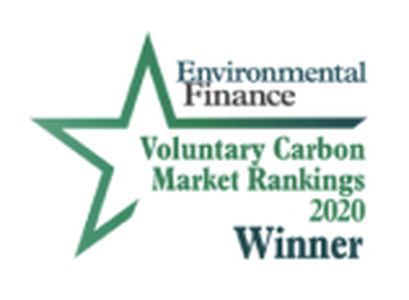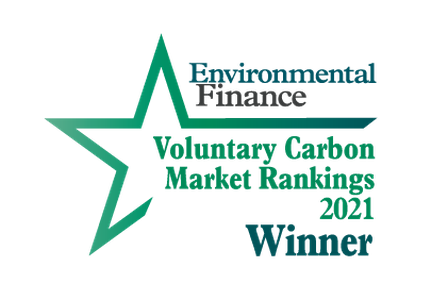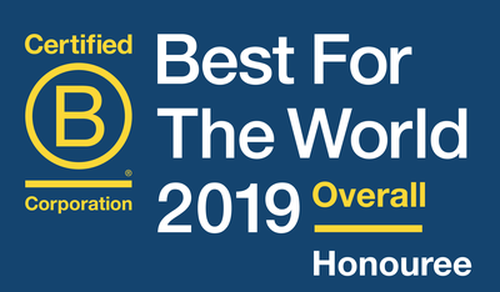Many recognize this decade is a critical period for climate action, and there’s more momentum in the private sector than ever before. Here's how the business community is showing leadership.
The sustainability landscape is evolving rapidly, fueled by executives, investors, and consumers that are calling for greater accountability and more action from corporate change makers. How are businesses adapting?
Last week, GreenBiz held its 20th annual conference in Phoenix, Arizona. It’s a valuable event for sustainability professionals to discuss what’s happening in the industry and share best practices. Climate Impact Partners is a GreenBiz sustainability partner and certifies the event—plus Verge and Circularity—as carbon neutral.
Here are 5 trends that emerged from the event and what they might mean for the year—and decade—ahead.
1) The risk is in doing nothing
The prevailing mindset used to be that a sustainability analysis could expose undue risk. In response, sustainability professionals adopted a refrain common among corporate strategists: “you can’t manage what you can’t measure.” But what leader wouldn’t want to know the weather forecast and the impact it might have on their supply chain and sales next quarter? Similarly, what leader shouldn't want to understand the longer-term consequences of climate change on their business?
Today, companies that ignored sustainability are playing catch up. That’s because sustainability fuels innovation. Sustainability principles have played a role in the uptake of renewable energy, electric vehicles, 3D printing, artificial intelligence, recycling, and eco-friendly products among other things—all of which can disrupt activities across the value chain, transform operations and logistics, influence employment trends, and shift customer demand. The risk is in doing nothing.
Corporate leaders are making clear signals about the future of business, joining the RE100, setting Science Based Targets, and attaining CarbonNeutral® certification. Companies in the Fortune Global 500 set the standard and they are increasingly adopting sustainability as a core part of their business.
2) Words matter—yet we can’t let the perfect be the enemy of the good
There is no definitive roadmap or template for any company’s sustainability journey. It evolves organically and dynamically. In the process, a variety of terms and definitions have proliferated. Frankly, it’s confusing even for professionals.
Consider food and agriculture. You may hear sustainable agriculture, sustainable intensification, regenerative agriculture, climate-smart agriculture. Each term has a particular meaning, which may overlap with other terms or may be completely distinct. Those distinctions are critically important in some cases, but there’s an even bigger reality: these terms are helping move the conversation forward. As much as these terms compete, they create a common language and serve an important purpose.
Similarly in addressing climate change, a variety of terms and concepts have emerged. Carbon neutral, carbon positive, carbon negative, and climate positive, to name a few. At Climate Impact Partners, we’ve studied corporate climate commitments and have found “carbon neutral” to be the most common term, but we’re also seeing clients make more ambitious pledges as their programs evolve. These distinctions matter, but they also add to the broader conversation and reflect the growing trend in the business community to make commitments and take action on climate.
3) Corporate commitments have gone from nice to have to must have
You don’t need to be an insider to see the big headline commitments that companies are making. There’s been a series of big corporate commitments recently, particularly related to climate change. Blackrock will divest from high-risk investments, Amazon committed to net zero carbon emissions, and Microsoft is going carbon negative. In fact, our research shows one quarter of the Fortune Global 500 have made public climate commitments.
A lot of work goes on behind the scenes to align around new sustainability commitments, much less execute against them. Enabling these commitments are passionate CEOs showing that they are ready to lead on sustainability. They see the business case and the value of taking voluntary action, and they are prioritizing sustainability on their agenda. Meanwhile, the role of the CSO has been elevated in a number of organizations, or at least it’s become more central to business decision-making. Sustainability commitments of the past were largely focused on philanthropy; commitments today are focused on strategy.
4) Corporate leaders are willing to talk about the challenges, not just successes
It’s no longer sufficient for companies to set bold targets. They have to deliver. Companies (to the frustration of many journalists) used to gloss over failure and only talk about success.
But admitting failure is not the same as admitting defeat. As business leaders become more experienced in managing corporate sustainability, they are coming up against practical constraints on their ambitions. Being more transparent about these constraints serves two purposes:
Education—In some cases, companies need to educate their stakeholders—investors, customers, employees, etc.—about the limitations they are facing. It could be that market drivers, technology, or other factors are impeding progress. What’s important in this instance is for companies to identify an alternative path forward.
Cooperation—As sustainability issues become more complex, the need for greater cooperation increases. Companies that are vocal about their challenges can solicit partners and competitors to step in and support efforts or drive innovation in new areas.
5) It takes optimism in the face of climate adversity
Sustainability professionals are notoriously optimistic. Whether we’re advising CEOs on strategic business decisions or rallying employees around an important cause, optimism helps influence and motivate. At times, such optimism can seem unwarranted. For a long time, the sustainability professional swam upstream in their organization, struggling to gain buy in.
Over the last decade, this dynamic has shifted dramatically as more companies realize the value of sustainability. Where one person used to manage sustainability, now they manage teams. Where there used to be pressure to cut costs, now sustainability is seen as an investment in the bottom line. And where leaders used to be hesitant, now they are willing to take a stand on the issues that matter to their business and their stakeholders.
With climate change—now a climate emergency—as one of the leading issues for business today, there is a greater need for optimism than ever before. Because optimism inspires action.
Many recognize this decade will be the turning point in climate action. There’s more momentum in the private sector than ever before. And though that’s not enough to solve all the challenges, it’s critical to have the business community making bold commitments and leading.
Dernières actualités

New test article 2023
A dummy article to test title issue.
Pour en savoir plus
FR Test News Article
Article test en français
Pour en savoir plus
Natural Capital Partners and ClimateCare become Climate Impact Partners
Natural Capital Partners and ClimateCare become Climate Impact Partners and sets goal of delivering 1 billion tonnes of emission reductions by 2030.
Pour en savoir plusLes toutes dernières Insights de
Climate Impact Partners

10 idées reçues à abandonner sur la compensation carbone
10 idées reçues à abandonner sur le net zéro et la compensation carbone.
Pour en savoir plus
FR Test insight article
Testing all plug-ins in 2 column format for French
Pour en savoir plus
FR - Innovation test insight article
As carbon markets grow and innovate how can Web 3.0 be harnessed in a positive way to build scale and impact?
Pour en savoir plus










